- If you read our recommendations on how to choose the best moment to start your outdoor crop, you have probably waited for the good weather to settle in and for the best temperature to start growing.
- However, just as important as adequate weather conditions is to use the correct method to germinate your seeds.
- The first moments of life of your plants are crucial, and yes, there is a method to germinate your seeds that yields the best results. Below we explain how to do it step-by-step.
- Continue reading.
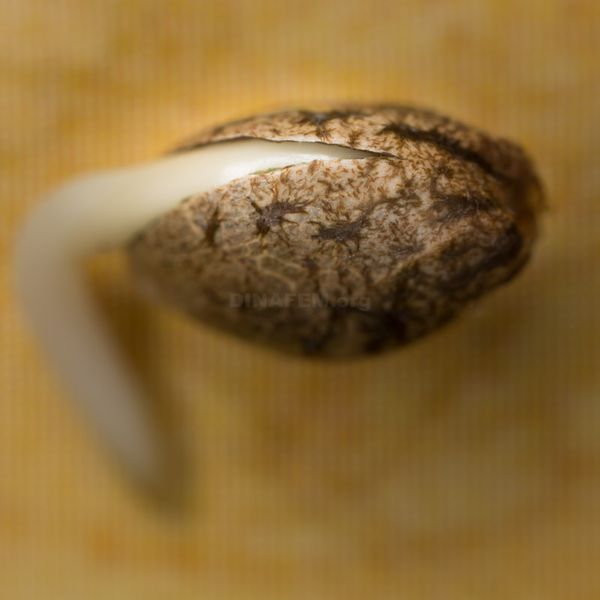
You can germinate your cannabis seeds both indoors and outdoors, though our recommendation is that you do it indoors, as you will have more control over all the factors that can have a negative effect on the process. But if this is not, below we explain the best way to germinate seeds outdoors.
Our first recommendation, as we already said, would be to wait for the good weather to settle in. Having a high temperature (from 22 to 26°C) is an important factor for your seeds to decide to emerge into the world.
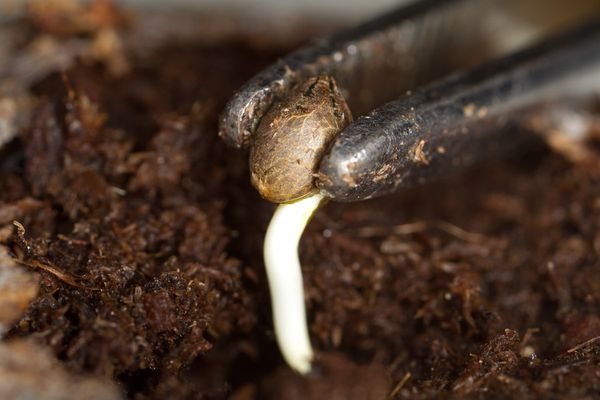
Step 1: protect your seedlings from climate factors and fauna, prevention is better than cure.
Outdoors we never know what dear mother nature has in store for us; in the same way that your seeds might enjoy a week of good weather and sun, there can also be thunderstorms and low temperatures on the very day they sprout. Not to mention the large variety of birds, snails and other fauna that delight in eating those tender and tasty marijuana seedlings. Bear in mind that during their first moments of life, your plants are defenceless against many dangers that threaten them; therefore, it is your job to take care of your little ones and keep them safe. How? It's actually quite simple, you can buy mini-greenhouses for germinating or you can use a Tupperware and make holes in it for adequate ventilation, although we recommend the first option.
Ventilation is an important factor; don't make the greenhouse airtight, open the trapdoors to allow adequate ventilation and as the covers are made of thin plastic, you can even make some extra holes if necessary.
Step 2: choose quality materials.
Today you can find high quality products on the market, specifically designed for germination and which, in addition, are not expensive. What do you need?
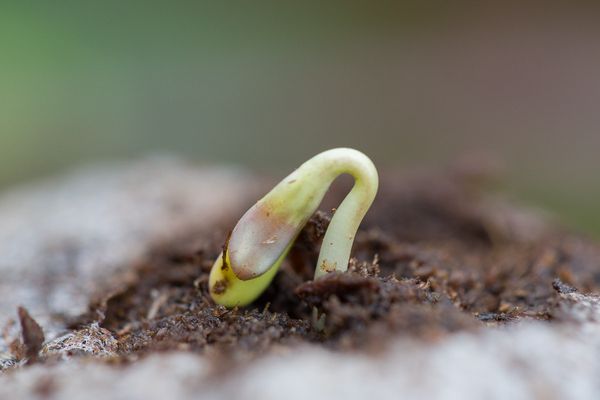
- Germination greenhouse
- Electric blanket: If you live in a very cold area, a good solution to stimulate germination is to place an electric blanket underneath the greenhouse, thus achieving an adequate temperature. It is important that the probe that measures the temperature calculates the temperature of the blanket, and not of the greenhouse, as otherwise you might heat the seeds excessively.
- Jiffy 7: This product consists of of a compressed and dehydrated substrate pellet which, after leaving it in water for a few minutes, becomes a small sack of special substrate for germinating, and is also biodegradable. This is the star product that will optimise your germination process due to the following reasons:
- On the one hand it has the ideal structure, that is, the amount of air and water in the substrate is adequate for germination.
- It is sterilised, meaning that we prevent the appearance of fungi (powdery mildew, botrytis, etc)
- It has all the elements necessary to nourish your seed/seedling during the first week; the ideal amount of nitrogen, phosphorus, potassium, calcium and magnesium. Phosphorus and calcium are particularly important for the correct development of roots.
- It has a neutral pH, which is the most adequate and makes it the perfect medium for germination; during one week you just have to add water.
- Jiffy 7 is expressly designed for the mega-industrial production of seedlings and does not require fertilisation.
- Another advantage is the specific temperature: water has a low specific temperature. This means that if we place a glassful of water in a room at 25°, it will be very hard for the water to reach that temperature. Therefore, if we place the cannabis seeds in a very watery medium (a glass or between paper towels) the temperature will be lower, while in a Jiffy, as it is more exposed to the air, the temperature will be higher and the process, faster.
However, there are people who germinate marijuana seeds in paper towels. Why don't we recommend them? Well, although this method may be effective, it is not the most adequate and has some disadvantages. To start with, the seedlings do not receive the necessary light, as the paper towel that covers the top prevents the sun's rays from penetrating. In turn, in the Jiffy they do receive light, and therefore photosynthesis will start earlier. Another advantage is that as soon as the root emerges in the Jiffy, it starts to turn downwards and to absorb nutrients: on the one hand we accelerate the process and on the other, when we replant the Jiffy 7 with the seedling there is no transplant shock.
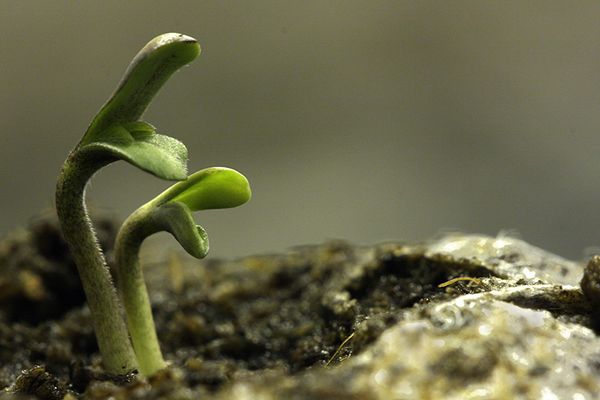
Step 3: follow the method.
- Put the Jiffys in lukewarm water.
- Once the Jiffys have expanded, make sure that they are thoroughly wet (don't squeeze them, just remove the excess liquid if they are dripping). Monitor the pH (between 6 and 7) and the EC (less than 0.5 ms) of the water.
- Insert the seed in the central hole of the Jiffy, not too deep (approximately 5 mm) with the tip pointing upwards. The marijuana plant must not be sown too deep because otherwise the root has to travel too far: it always emerges through the pointy part of the seed, turns 180°, penetrates into the soil, and once it is secure, it raises its "head" from where the cotyledons will grow.
- Place the Jiffys in the greenhouse as well as a thermo-hygrometer to monitor the temperature and humidity.
- Temperature control: it must not fall below 20 degrees nor exceed 30. If you put the greenhouse in the sun, it can get very hot; you must constantly monitor the temperature. If it exceeds 25 degrees, we recommend that you lift up the top cover to ventilate it. Another important factor you have to check is humidity. If it is very sunny, the Jiffys will dry up and it is important that they are always humid. You must therefore add water when necessary, though not in excess. They should only be soaking wet during the first two days. After one week we should already have marijuana seedlings; with their two cotyledons (the first two round -shaped leaves), before the first two real leaves sprout (the serrated leaves), transplant them. If they are autoflowering seeds, we recommend that you transplant them to the definitive flower pot, though if they are feminised seeds you can transplant them to a smaller pot and then, when the plants are larger, you can move them to the definitive pot.
For indoors: The same but under a grow light, fluorescent or LED. If you have the option of germinating your cannabis seeds inside your home, ideally the light intensity will be high; the less intense the light, the more the seedlings will stretch in search of light and become spindly. If you use a 400 W light ideally it should be 40-45 cm away.
Now that you know how to take your first steps, you're ready to start this season's crop. Have a good harvest!
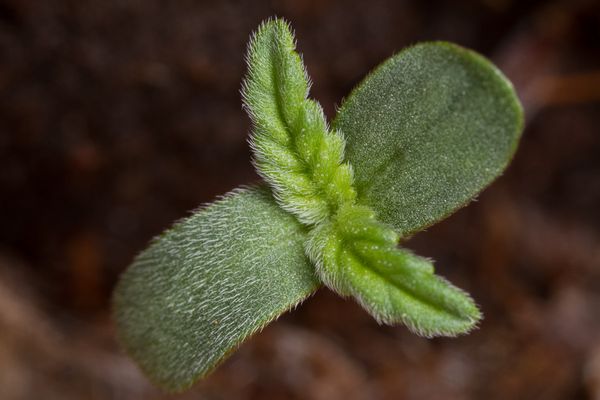



Comments from our readers
Read comments in other languages:
Did you like this post?
Your opinion about our seeds is very important to us and can help other users a lot (your email address won't be made public).